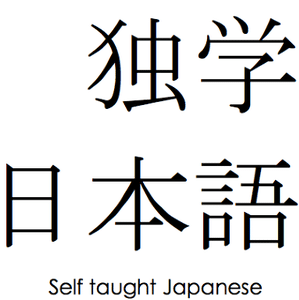
How to Use the Volitional Form of Japanese (AKA the “Let’s” Form)
The volitional form, or “let’s” form, was easily my favorite Japanese verb form to learn.
It’s used to tell people you want to do something, or to give people an invitation or suggestion to do something together. It also imbues your statement with a positive, eager vibe.
As a beginner wandering Japan, trying to immerse myself in the language and achieve some semblance of basic communication skills—man, what a relief it was to know I could tack on a simple ending to a verb and tell people “Let’s do X!”
Fair warning: After reading this post you’re going to fully know how to use this verb form and want to use it constantly.
In fact, it’s so easy, I started using it as a crutch rather than learning more nuanced (and more contextually appropriate) verb conjugations.
But don’t be like me. Make sure you branch out after reading this post.
5 Japanese Grammar Rules That Aren’t as Hard as They Look | FluentU Japanese Blog
Japanese grammar rules aren’t that hard, despite what many people say. Whether you want to demystify verb conjugation, use the right register for your boss or friend, or…
Download: This blog post is available as a convenient and portable PDF that you can take anywhere. Click here to get a copy. (Download)
Contents
- Polite Volitional Form in Japanese
- Casual Volitional Form in Japanese
- Examples
- Other Uses of the Volitional Form in Japanese
- How to Practice the Volitional Form in Japanese
- And One More Thing...
Polite Volitional Form in Japanese
So, the polite form is super straightforward and making it comes to a grand total of three steps.
- Pick a verb. Any verb.
- Conjugate the verb into its ~ます form.
- Replace the ~ます with ~ましょう.
Bam.
Let’s see this in action.
Group one (う) verbs:
話す (はなす) — to talk:
- 話す → 話します → 話しましょう — let’s talk!
聞く (きく) — to listen:
- 聞く → 聞きます → 聞きましょう — let’s listen!
– 待つ (まつ) — to wait:
- 待つ → 待ちます → 待ちましょう — let’s wait!
買う (かう) — to buy:
- 買う → 買います → 買いましょう — let’s buy!
帰る (かえる) — to return:
- 帰る → 帰ります → 帰りましょう — let’s return!
Group two (る) verbs:
食べる (たべる) — to eat:
- 食べる → 食べます → 食べましょう — let’s eat!
見る (みる) — to see:
- 見る → 見ます → 見ましょう — let’s see!
寝る (ねる) — to sleep:
- 寝る → 寝ます → 寝ましょう — let’s sleep!
Group three (irregular) verbs
する — to do:
- する → します → しましょう — let’s do it!
Casual Volitional Form in Japanese
The casual form looks a bit trickier because you have to know if you’re dealing with a る or う verb, but if we take another glance at the polite conjugation, you’ll see that something quite similar is actually going on.
The result of changing ~ます into ~ましょう is basically that an oh sound slips in, though it’s a little muddied by the sh sound.
We’re basically doing the same thing in the casual form, even though it might look different because there are more sounds involved than just the す of ます.
Just follow these steps:
- Pick a verb. Any verb.
- If it’s an う verb, add an o sound before the final u.
- If it’s a る verb, replace the る with よう.
If you’re struggling, try turning the hiragana into romaji, conjugating the verb that way, then turning the romaji back into hiragana.
It’s easy to imagine simply adding an o between the s and u in hanasu to get hanasou, which can then be easily converted into はなそう, while it might be a bit difficult at first to picture す turning into そう.
Below are some examples.
Group one (う) verbs:
話す (はなす) — to talk:
- 話す → 話そう
聞く (きく) — to listen:
- 聞く → 聞こう
待つ (まつ) — to wait:
- 待つ → 待とう
買う (かう) — to buy:
- 買う → 買おう
帰る (かえる) — to return:
- 帰る → 帰ろう
Group two (る) verbs:
食べる (たべる) — to eat:
- 食べる → 食べよう
見る (みる) — to see:
- 見る → 見よう
寝る (ねる) — to sleep:
- 寝る → 寝よう
Group three (irregular) verbs:
する — to do:
- する → しよう
Examples
Just like in English, the most basic use of the volitional case is to say let’s… or shall we…, as you can see below.
今日も一日頑張りましょう!
(きょうも いちにち がんばりましょう!)
Let’s do our best again today! (If you ever work in Japan, you’ll hear this one a lot!)
ファミマに行くんだけど、一緒に行こうか? うん、行こう!
(ふぁみま に いくんだけど、いっしょに いこうか? うん、いこう!)
I’m going to Family Mart, do you want to come with me? Yeah, let’s go!
Literally: (I’m) going to Family Mart, let’s go together? Yeah, let’s go!
Just like in English, note how we’ve casually made a suggestion.
Now say that you do go to Family Mart, pick out one of the lunches from the cooler and hand it to the cashier. They might say something like this:
こちら温めましょうか?
(こちら あたためましょうか?)
Would you like me to warm this up for you?
Literally: Shall I warm this up?
As a customer, you’re in a position of higher power than the cashier. When the cashier uses the volitional form, they aren’t suggesting that you heat it up (because it’ll be tastier that way), rather they’re offering to do something for you.
Other Uses of the Volitional Form in Japanese
The volitional form goes far beyond a simple “shall we?” in Japanese but this gets a bit complicated the further you delve into it.
Here are two useful and straightforward structures you can try adding to your speech once you get the basic form down.
To attempt
This structure is used to indicate that an attempt to do something was made. Just like in English, emphasizing that you’ve “tried” to do something suggests that it wasn’t necessarily successful.
メロンパンを十個食べようとしました。
(めろんぱんを じゅっこ たべようと しました。)
I tried to eat 10 melon breads.
韓国語で話そうとしたが、言葉が出てこなかった。
(かんこくごで はなそう としたが、 ことばが でてこなかった。)
I tried to speak in Korean but the words just wouldn’t come out of my mouth.
To be thinking about doing something
Adding 思う (おもう) ― to think after the volitional tense gives a sense of “thinking about doing” something.
Remember that in Japanese, although ~ている is often translated as -ing, it really means that a given state is continuing. Thus, saying ~ようと思う tends to refer to something that’s just occurred to you whereas ~ようと思っている indicates that you’ve been thinking about something for awhile.
今日は映画を見ようと思う。
(きょうは えいがを みようと おもう。)
I think I’ll watch a movie today.
機会があれば、転職しようと思っています。
(きかいが あれば、てんしょく しようと おもっています。)
I’ve been thinking about changing jobs, should an opportunity come along.
If you’re a bit more advanced, check out Self Taught Japanese’s page for a more expansive list of ideas you can express with the volitional tense.
How to Practice the Volitional Form in Japanese
If you aren’t feeling as confident as you’d like, let’s practice a bit!
- Try some volitional verb form practice from the Genki textbook.
- Check your understanding of the form with four practice tests from nihonmura.
- Use an immersive program like FluentU to see the volitional form in practice naturally, through native Japanese videos embedded with learning tools.
FluentU takes authentic videos—like music videos, movie trailers, news and inspiring talks—and turns them into personalized language learning lessons.
You can try FluentU for free for 2 weeks. Check out the website or download the iOS app or Android app.
P.S. Click here to take advantage of our current sale! (Expires at the end of this month.)

Hopefully that wasn’t so hard.
Although learning verb forms in any language can be confusing, one nice thing about Japanese is that verb forms tend to be tied to certain sounds. If you hear an oh sound at the end of a verb, it’s probably in the volitional form!
Download: This blog post is available as a convenient and portable PDF that you can take anywhere. Click here to get a copy. (Download)
And One More Thing...
If you love learning Japanese with authentic materials, then I should also tell you more about FluentU.
FluentU naturally and gradually eases you into learning Japanese language and culture. You'll learn real Japanese as it's spoken in real life.
FluentU has a broad range of contemporary videos as you'll see below:

FluentU makes these native Japanese videos approachable through interactive transcripts. Tap on any word to look it up instantly.

All definitions have multiple examples, and they're written for Japanese learners like you. Tap to add words you'd like to review to a vocab list.

And FluentU has a learn mode which turns every video into a language learning lesson. You can always swipe left or right to see more examples.

The best part? FluentU keeps track of your vocabulary, and gives you extra practice with difficult words. It'll even remind you when it’s time to review what you’ve learned. You'll have a 100% personalized experience.
Start using the FluentU website on your computer or tablet or, better yet, download the FluentU app from the iTunes or Google Play store. Click here to take advantage of our current sale! (Expires at the end of this month.)



